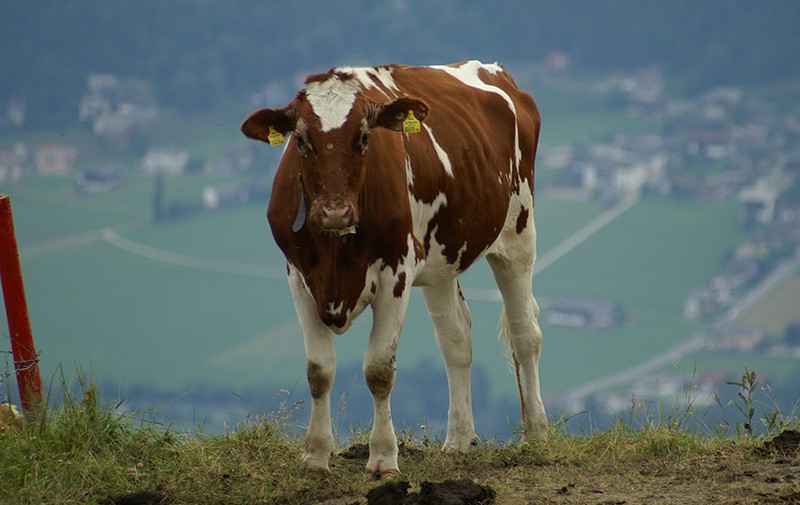
Origin
Ayrshire cattle originated in the county of Ayr in southwestern Scotland prior to 1800. Early Scottish dairymen selected various strains of cattle—including both European and Channel Island breeds—to cross with the small, native cattle, using any available stock they felt would improve their animals’ utility. The result was an efficient dairy animal ideally suited to the harsh climate and poor- quality forage found on the exposed moors and barren moss of the Scottish Lowlands.
History
Ayrshires were first imported to the United States around 1822 by New England farmers in search of a dairy cow that could thrive in the region’s rough, rocky pastures and tolerate the bitter winters. Today there are registered Ayrshire breeders in 29 states and in other harsh climates across the globe, from the icy Scandinavian coast to the heat-scorched plains of Africa.
Appearance
With their striking reddish brown and white spots, Ayrshires make elegant pasture ornaments. The Ayrshires’ beauty is so remarkable among cattle breeds that Prince Charles even keeps a herd of them on his Highgrove estate. But despite their royal looks, Ayrshires’ thrifty versatility, mild manner, and relative lack of health problems make them a valuable option for small-scale dairy operations and hobby farmers.
Milk
Ayrshire milk is prized around the world for its excellent flavor and texture. It averages around 3.4 percent protein and slightly less than 4 percent butterfat—about 10 percent more than Holstein milk and 20 percent more than the USDA requirement for whole milk. Ayrshire milk also has the singular distinction of having the smallest-size fat globules of any of the major milking breeds in the United States. These small fat particles break down easily during the ripening process, yielding clean, predictable flavors and a cheese that is easier to digest than other cow’s milk cheeses.




